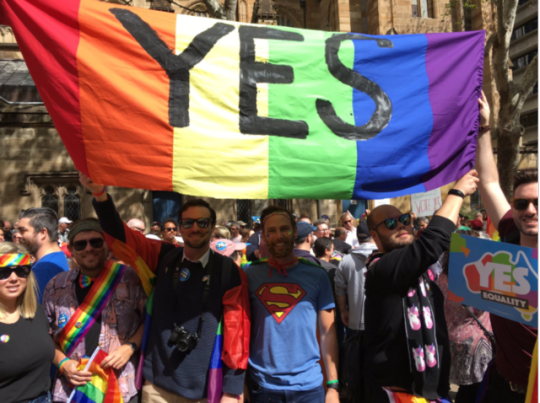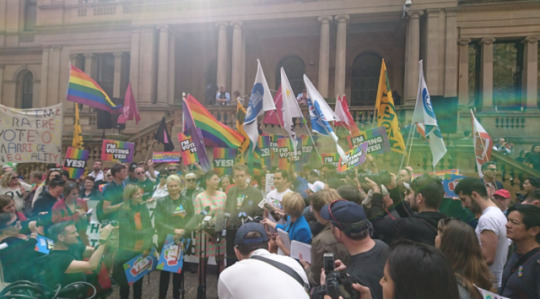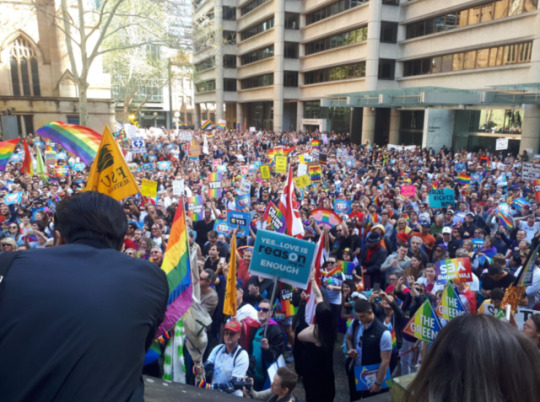Text
References
• Cutlip, S., Center, A. and Broom, G. 2000, Effective public relations, Prentice Hall, NJ
• Demetrious, K. 2014, ‘Community engagement and the third sector’ in J. Johnston & M. Sheehan (eds), Public relations theory and practice, 4th edn, Allen and Unwin, Crows Nest
• Seitel, F, 2007, The practice of public relations, 10th edn, Pearson/Prentice Hall, Upper Saddle River, NJ.
• Stockwell, S. 2014, ‘Government and political public relations’ in J. Johnston & M. Sheehan (eds), Public relations theory and practice, 4th edn, Allen and Unwin, Crows Nest.
• Cutlip, S., Center, A. and Broom, G. 2000, Effective public relations, Prentice Hall, NJ
• Christensen, LT, Morsing, M, & Cheney, G. 2008, Corporate communications: Convention, complexity and critique, Sage
• Cornelissen J 2008, Corporate communication: A guide to theory and practice, 2nd edn, Sage Publications, London
• Crane, A, Matten, D & Spence, LJ (eds) 2008, Corporate social responsibility: Readings and cases in a global context, Routledge, Oxon, UK, pp.6-7.
• Davis, A 2007, Mastering public relations, 2nd edn, Palgrave Macmillan, Basingstoke, UK
• dePelsmacker, P., Geuens, M & Van den Bergh, J. 2004, Marketing communications: A European perspective, 2nd Edn, Prentice Hall, Harlow, UK
• Doorley J & Garcia HF 2007, Reputation management: The key to successful public relations and corporate communication, Routledge, NY.
• Ewing, ME 2007, ‘Changing with the times: leveraging the Web to enhance your employee communications program’ in Public Relations Tactics, viewed at http://www.prsa.org/Intelligence/Tactics/Articles/view/869/101/Changing_with_the_times_Leveraging_the_Web_to_enha
• Guth D W and Marsh C, 2009, Public relations: A value driven approach, 4th edn, Allyn & Bacon
• Lattimore, D, Baskin, O, Heiman, ST & Toth, EL 2012, Public relations: The profession and the practice, McGraw-Hill, NY
• Ragas, 2014, Business essentials for strategic communicators, Palgrave Macmillan
• Tench, R & Yeomans, L 2009, Exploring public relations, 2nd edn, Prentice Hall, Harlow
• Van Reil, CBM & Fombrun, CJ. 2007, Essentials of Corporate Communication, Taylor & Francis
• Zerfass, A. & Franke, N. 2013 ‘Enabling, advising, supporting, executing: A theoretical framework for internal communication consulting within organizations’ in International Journal of Strategic Communication, 7(2), pp. 118-135
• Johnston, J & Sheehan, M (eds) 2014, Public relations: theory and practice, 4th edn, Allen and Unwin, Crows Nest, NSW.
0 notes
Quote
If I was down to my last dollar, I would spend it on public relations
Bill Gates
0 notes
Text
Free Choice
I decided to use my free choice journal entry to dicuss the course as a whole, my assumptions going into it and my views now I’m finished. Going into this course I knew very little about PR. In fact, my whole idea of PR was based off Hollywood movies. The go-to person to cover the tracks of the celebrity who made a boo-boo. I wasn’t very interested in PR as a profession and definitely wanted to stick more to marketing. I had this very ignorant view that a PR person was basically a professional liar and manipulator. After my first class, I realised I was very, very wrong. The theories I have learned throughout this semester have opened my eyes up to everything going on around me that I never would have noticed. For example, watching The Project with Mum until Dad comes over and switches it to ABC I was able to compare these two programs and relate it to “Excellence Model Ideal” or “System’s Theory.” In fact, I enjoyed this course so much that halfway through I decided to seek out an internship to experience first hand what working in PR would be like. I landed myself an internship at Girl About Town in the city and have been loving every minute of it. I was a bit confused for a while whether I wanted to keep at my marketing degree or switch over to PR and just my luck one of our topics was differentiating marketing and PR. This was extremely helpful and convinced me PR was the direction I wanted to head. This was by far my favorite subject of this semester and I have gained so much knowledge. I now see everything around me differently, the way I watch TV, the way I use social media and I now have a new direction in life.
0 notes
Text
Week 11
This week we explored political and government PR and the differences between them. Political PR involves the agenda run by a political party whereas government PR focuses on the communication to run the government. What helped me understand this difference easily was the list of categories divided into either political or government such as housing, seniors, properties and emergency services. Also applying it to a relevant example such as the new Royal Adelaide hospital further assisted me in understanding these differences. This example explained that political PR was involved in the costs, loss of services and delays whereas government PR was involved in the new facilities, opening times and the new services. We also looked at political PR and social media which related back to our previous weeks topic. We discussed the important of using this social media in political campaigns and how great of a tool it is to reach and bypass the media. Non-for profit organisations was another topic discussed. When I think about all the nonprofit organisations I know of such as Red Cross World Vision and UNICEF I can see a lot of the trends mentioned present. For example marketing techniques, they all seem to use include videos that go viral (KONY 2012) or hashtags. We also explored a lot of the issues facing charities like there being so much competition with so many charities out there. Being not for profit in itself is a struggle as they don’t typically benefit from advertising or get as much social media attention so it would be a lot harder to gain an audience. I know for myself, walking down the street I very rarely (in fact I'm ashamed to admit maybe never) stop to donate to charities usually because I'm in a rush or only have card. It seems to be until a charity relates to your own life, for example, a family member is diagnosed with cancer and Make A Wish gets in contact with you, people just don’t care enough.
0 notes
Photo




Huge crowds gather in Sydney for the Vote Yes rally for Marriage Equality.
We can do this.
3K notes
·
View notes
Text
Week 10
This week’s topic involved a brief overview of last week; corporate communications. This was followed by internal and employee communication. At first, I was a bit confused as these two definitions seemed to be used interchangeably. However, as we discussed this further in class I was able to clarify key differences between the two. One being the objectives of internal communication are to clarify management policies and employee well being and safety. Employee communication is more about the engagement of the employees and how happy and satisfied they are. It was interesting to reflect on a survey done in 2015 that found the top 3 drivers of choice were salary, employee benefits, and long-term job security. Thinking back to my old jobs I have had and haven’t enjoyed as well as my current job, these three factors are definitely what contributes to my drive. Some of the tactics to enhance internal communication were things like meetings, events, and newsletters. In my own workplace, I know when we have a meeting each month that is when most things are discussed and then resolved and it’s a very important part of the communication between all staff in the workplace. This is also where people can address concerns or worries and things they feel could be improved. Without a meeting, most employees (including myself) would just keep it to themselves or discuss with co-workers but not be proactive about changing things. The final topic we explored was corporate social responsibility. This was the most interesting topic of the three for me this week as I could apply it to the YES marriage equality campaign that many companies and public figures have come out and publicly supported. Marriage Equality is a hugely passionate topic of mine and the companies that have shown support for this movement have gained so much respect from myself as customer and supporter. I feel like doing this can obviously be risky as those that don’t agree with marriage equality may stop buying or using the brand as an act of defiance. However, it can do the opposite for those that agree while also helping to raise awareness.
This reading has been my favourite in the course so far. Being like most adolescents I am addicted to the internet. So much so that I feel anxious or uneasy to be without it for more than a few minutes (this is very sad to admit but alas, true). To read some of the statistics in this reading was mind-boggling, especially since they were old. The main concept of this chapter was digital media and its effect on public relations profession. I enjoyed this reading the most as I am interested in the internet and how it is developing, its future, the future of media but also as I want to work in PR so it’s interesting to see how this is affected by the internet and what is to come. Interning at Girl About Town, a PR agency in the city, has allowed me to see first-hand how they utilise the internet with all their clients, for almost all their jobs. In fact, social media is one of the key tools they use to promote brands as well as connect with their audiences and their clients. I also thoroughly enjoyed the story of the Chinese blogger Rui Chenggang who managed to close a Starbucks coffee shop with a simple blog post. This is a huge eye opener to just how influential social media can be. This also makes me think about my own personal blog where I share mostly pictures but some of my own thoughts and the possibility of how much of a difference I could make.
0 notes
Photo

Anti smoking ad. Don’t be a Slave to addiction
528 notes
·
View notes
Text
Week 9
This week we covered two main topics; the function of Public Relations in corporations and corporate Public Relations responsibilities. We learnt about the landscape of PR that is constantly changing and evolving. New challenges face PR practitioners such as the introduction of digital information, the new reality of our global economy and the emergence of many new stakeholders. These new challenges have created an unprecedented transparency in the PR industry, allowed access to the production and consumption of information and resulted in less effective influence from corporations. However, these challenges have also lead to positive changes and new opportunities such as the ability to reach genuine stakeholders, help build brands and their reputation and advance policy interests. Corporate communications were explained as ‘…a management function that offers a framework for the effective coordination of all internal and external communication with the overall purpose of establishing and maintaining favourable reputations with stakeholder groups upon which the organization is dependent’ (Cornelissen, 2008, p.5). This definition introduces the idea that the reputation of an organisation comes down the communication team. Cornelissen also explains the purpose of corporate communication which is to ensure a company reputation is maintained and protected while also helping to build it. This was all very new information to me as I had never even heard of corporate communications.
This week’s reading was chapter 7 of Public relations in Asia Pacific communicating effectively across; The Role of Public Affairs in Asia Pacific. We learned about lobbying, both direct and indirect. I found it interesting to note that as based on experiences in the UK our parliamentarians will be lobbied about 22,600 times a week! While reflecting on this reading I also was unaware how much effort goes into public affair campaigns. The example used about a fictional pharmaceutical company seeking to make their new drug X legally available involved so many activities that can be implanted such as developing allies such as charities that deal with the impact of the drug being unavailable. In another (factual) case in Singapore where Singapore prison Services launched a campaign to provide rehabilitation programs for inmates among other things, it was interesting to see how many programs were implemented over the four years to help raise awareness about this. Another interesting point in this reading was the discussion about controversy being an effective way of influencing a target audience. I look back on some of the campaigns I’ve seen and how they’ve affected me. For example, some of the smoking ads are quite controversial and graphic, I have grown up watching them seeing the physical damage cigarettes can do to people. This has deterred me from ever smoking more than I think anything else would including my parent's warning. However, I can understand creating a controversial campaign is always going to be risky so I agree when the author states a controversial campaign needs to 100 percent support the organisations public affairs goals and able to stand under intense pressure from the public. Overall, this week’s topic both the lecture and reading heavily emphasized the fact that corporations need to build and maintain relationships with the government and understand their audience; communication is key.
0 notes

